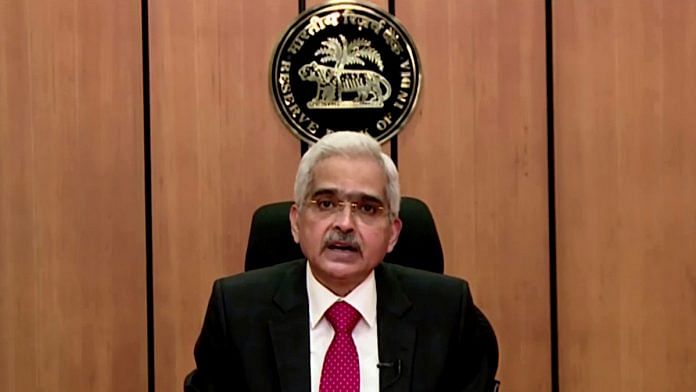Mumbai: Indian cricket got a fan from an unusual quarter during this season of the Indian Premier League (IPL).
The Reserve Bank of India governor Shaktikanta Das, during the address to the media after the Monetary Policy Committee (MPC) meeting Friday, used a cricketing analogy to describe how certain sectors of the economy are expected to play out in their effort to revive growth.
“Sectors that would ‘open their accounts’ the earliest are expected to be those that have shown resilience in the face of the pandemic and are also labour-intensive,” he said.
So agriculture and allied activities, fast moving consumer goods, two wheelers, passenger vehicles and tractors etc sectors can be expected to do Sanju Samson or a Mayank Agarwal – the powerplay hitters.
Then he went on to name the middle order batsmen – “the second category of sectors to ‘strike form’ would comprise sectors where activity is normalising gradually.”
And then comes the slog over hitters, the likes Rahul Tewatia or Marcus Stoinis, who can “rescue the innings”.
“The third category of sectors would include the ones which face the ‘slog overs’, but they can rescue the innings. These are sectors that are most severely affected by social distancing and are contact-intensive,” he added.
Also read: Consumers’ confidence hits new low, but they are hopeful about next year, RBI survey shows
Das’ approach as RBI governor
One may wonder if the IPL virus has caught the bureaucrat-turned-central bank governor.
The government had faced criticism when non-economist Das was appointed as the RBI governor in December 2018 after the sudden resignation of economist Urjit Patel, his predecessor.
Since his appointment as the central bank governor, Das’ attempt has been to replace economic jargons with more relatable language to convey decisions.
On 17 April, during the initial days of nationwide Covid lockdown, Das quoted Mahatma Gandhi’s famous speech from October 1931 at the London’s Kingsley Hall, to convey the message of hope in terms of revival of economic activities.
“…in the midst of death life persists, in the midst of untruth truth persists, in the midst of darkness light persists,” he said.
Again, on 27 August, while highlighting the need for strong resilience to win the fight against the pandemic, he quoted Leo Tolstoy’s War and Peace.
“… I would like to say that Covid-19 poses several challenges for banks and the financial sector. Proactive action on various fronts – some of which I have highlighted – will enable us to deal with these challenges effectively and maintain the soundness of Indian banking system. I am reminded here of a quote from Leo Tolstoy in War and Peace: ‘a battle is won by those who firmly resolve to win it’,” the RBI governor said.
That was a welcome departure from the central banking lexicon, which often oscillated within the narrow range between a dove and a hawk, and sometimes settling at the mid-point – owl.
In central banking parlance, a dove means policy supportive of growth, while hawk refers to policy aimed at controlling inflation, which is often done by increasing interest rates. Owl is referred to indicate the stance of a watchful central bank, which is not dogmatic with growth or inflation.
About a decade ago, another bureaucrat-turned-central banker, D. Subbarao, had talked about demystifying the office of the RBI governor.
Also read: RBI’s new MPC should focus on transmission. Without that, more rate cuts can be pointless



